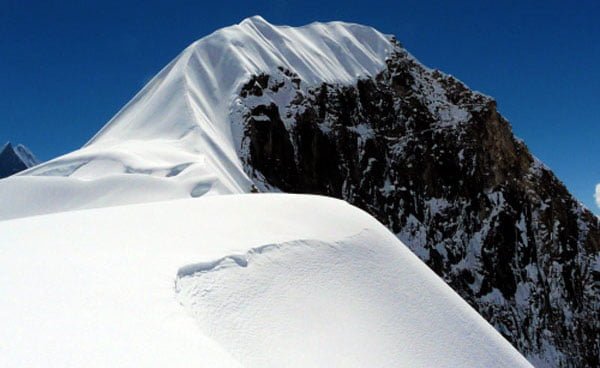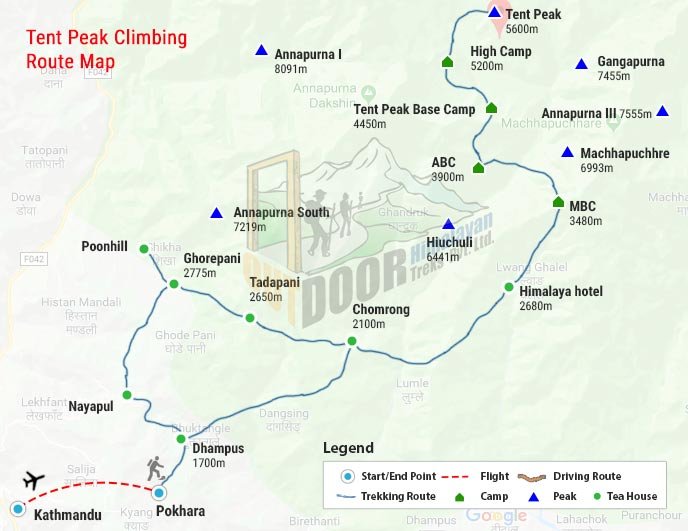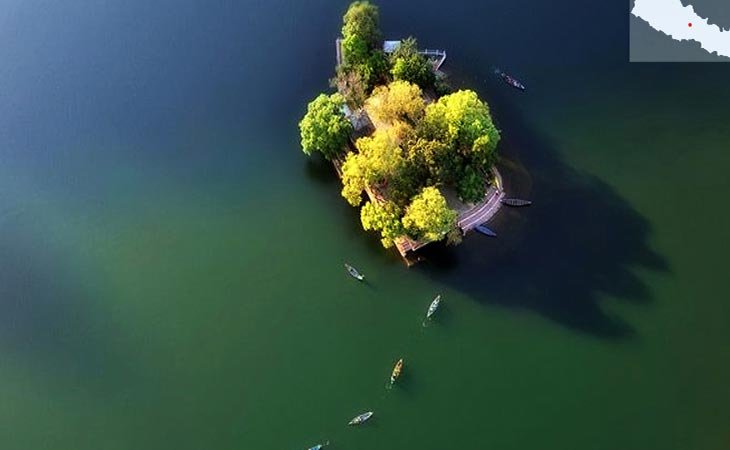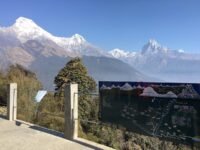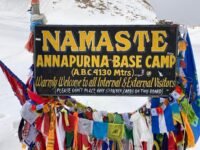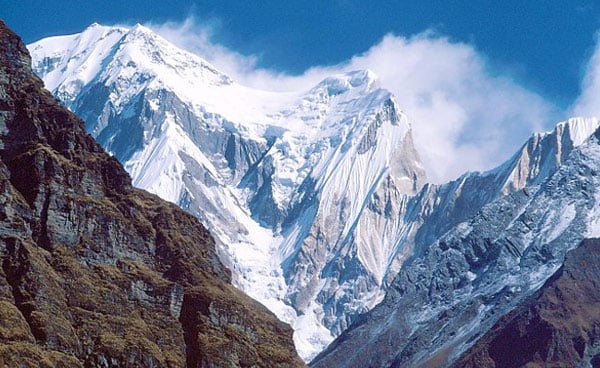Tent Peak also known as Tharpu Chuli is one of the charming peaks for those seeking an experience of first mountaineering in Nepal. Tent Peak (5695 m) sees one of the highest numbers of climbs in Nepal. Tent Peak climbing is strenuous but the trek up to the peak and return combines the central attractions of the Annapurna region in a single route.
Is this Tent Peak Climbing for me?
Physical Grading: Strenuous
A strenuous trek that demands trekkers/travelers to have a top-notch level of physical and mental fitness to trek daily for long hours at high altitudes.
Max Elevation: 5,695 m (Tent Peak)
The highest point of the trek is a perfect vantage point to get wonderful views of Mt. Annapurna I, Annapurna South, Singu Chuli, Machhapuchhre, Hiunchuli, Gangapurna, etc.
Accommodation: Hotel, Teahouse, Camping
Comfortable accommodation with basic facilities during peak climbing, a tented camp during peak climbing, and a standard hotel in a city.
Meals: Full Board
Healthy and Hygienic 3-course meals during the peak climbing, and only breakfast in a city.
Best Season: Autumn & Spring
Stable weather and temperature offer clear views and comfortable trekking trails.
Trip Route:
Tikhedhunga – Ulleri – Ghorepani – Poon Hill – Tadapani – Sinuwa – Dovan – Deurali -Annapurna Base Camp – Tent Peak Base Camp – High Camp – Tent Peak – High Camp – Annapurna Base Camp - Bamboo - Jhinu Danda – Matkyu Danda
Tent Peak Climbing Highlights
- Ascending Tent Peak at an elevation of 5,695 m
- Classic Annapurna Base Camp Trek (4,130m)
- Captivating sunrise and sunset over snow-capped mountains
- Terraced farmlands, lush greenery, and beautiful landscapes
- Traverse through villages of various ethnic groups
- Immerse yourself in the Himalayan lifestyle and culture of locals
- Panoramic views of mountain ranges and peaks (Annapurna I, II, III, IV, V, Gangapurna, Machhapuchhre), Singu Chuli, Hiunchuli, etc.)
Tent Peak Climbing Overview
Tent Peak is one of the charming peaks for those seeking an experience of first mountaineering in Nepal. Tent Peak (5695 m) sees one of the highest numbers of climbs in Nepal. Tent Peak climbing is strenuous but the trek up to the peak and return combines the central attractions of the Annapurna region in a single route. The route includes Annapurna Base Camp, Machhapuchhre Base Camp, and Ghorepani-Poonhill Trek. Perhaps no other trekking or climbing trails in Nepal can rival the ideal mixture of nature at its best. Tent Peak Climbing also offers the pristine culture, adventure trek, experience of climbing a summit, and grand views.
The journey to Tent Peak begins from Pokhara, the center of adventure activities in Nepal. From this beautiful sub-tropical valley at the foot of the massive Annapurna range, reach Tikhedhunga by jeep. From there, trek in the region of lush forests, amphitheater-styled rice fields, and beautiful farmlands. The Annapurna Sanctuary through which we trek is a wonderland for those seeking the touch of pristine nature. This area is blessed with a wide variety of biodiversity.
Walk the route of Ghorepani-Poon Hill Trek, one of the most famous trekking destinations of Nepal on foot. After that, follow the trek route to the Classic Annapurna Base Camp which leads to the base camp of Tent Peak. After proper acclimatization, ascend to the Tent Peak. From the summit of the peak, hold your breath to view the incredible panorama of a large section of the Annapurna mountain ranges (Annapurna I, II, III, IV, V, Gangapurna, Machhapuchhre), Singu Chuli, Hiunchuli, etc. In a little over two weeks, you can scarcely expect more than this!
